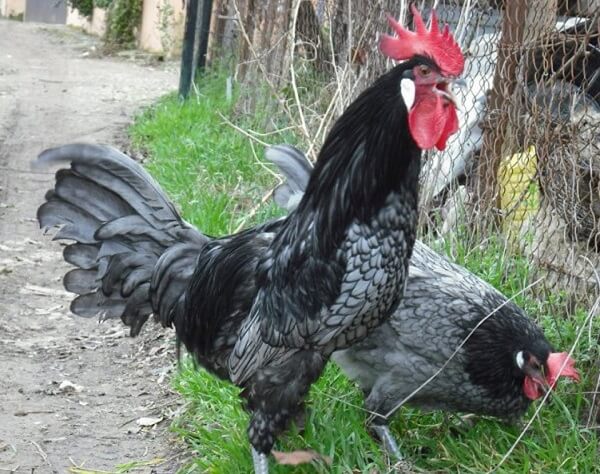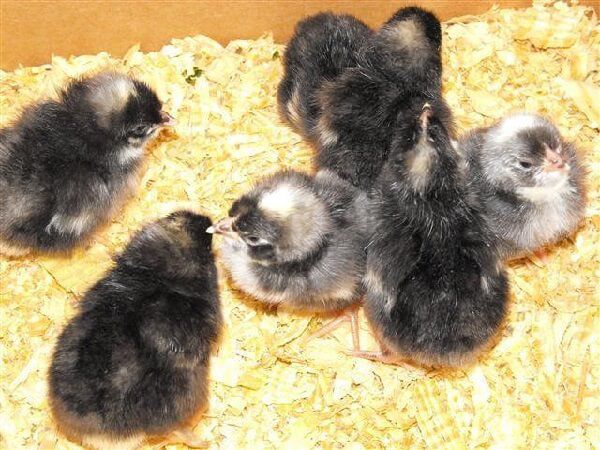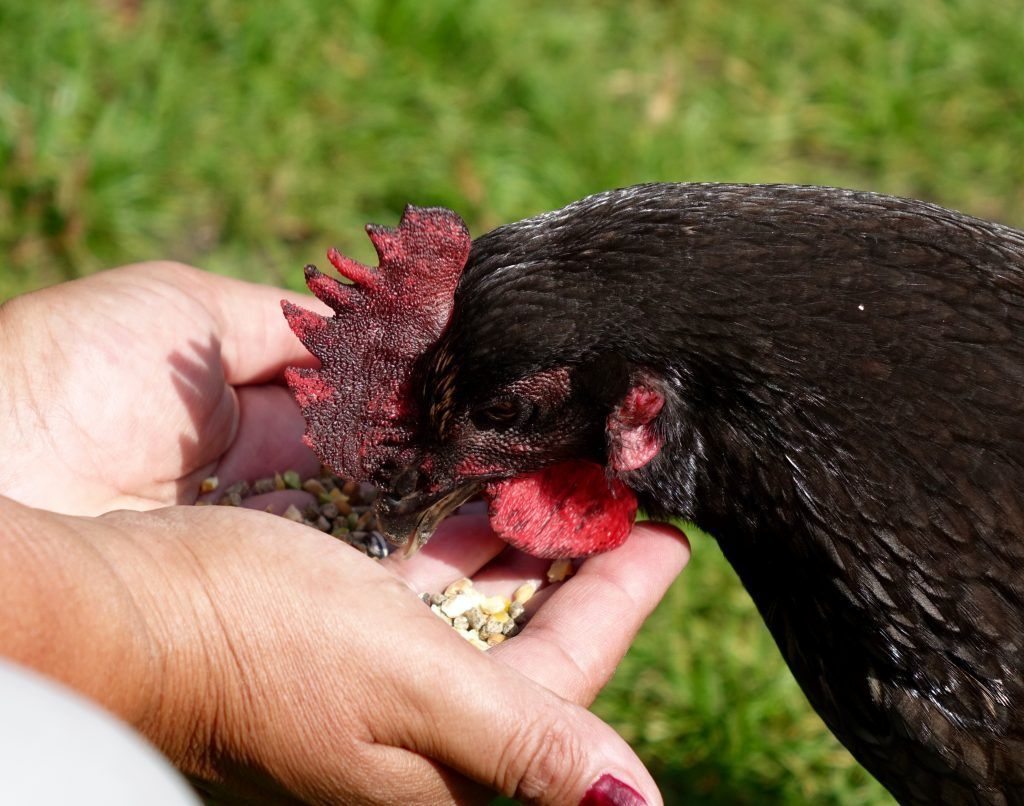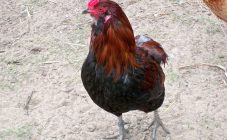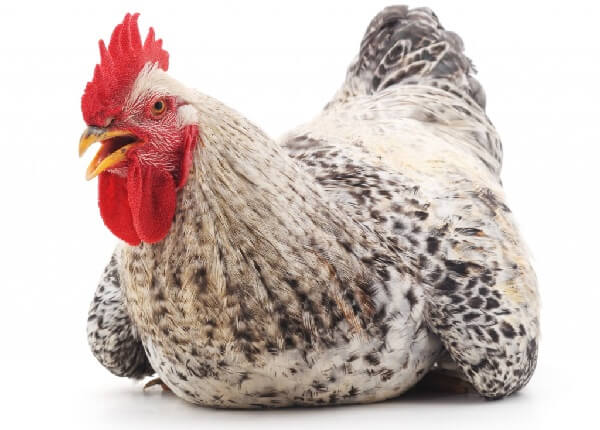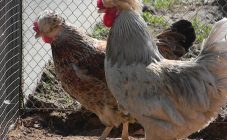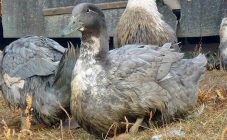Poultry farming is an extremely delicate branch of agriculture. It is one thing when this is done on an industrial scale at agricultural holdings, of which there are quite a lot in Russia, where professionals work, and it is completely different for amateur poultry farming. There are huge risks for newbies here. It is important to determine the goal before starting breeding: for your own pleasure or for profit. There is also a moral and ethical aspect of this activity: whatever one may say, but still the poultry farmer works with living material.
Another important point is the choice of the type of poultry that a novice farmer wants to breed. The most popular and easy-to-care option is domestic chickens. There are a number of rare breeds for breeding. If a poultry farmer undertakes to develop his activities in this channel, then you need to know many nuances. In this regard, let us focus on the Andalusian blue breed of chickens.
Breeding history
The birthplace of the breed is the Spanish region of Andalusia, located in the southwest of this state. The breed got its name due to the bluish tint of plumage. The described breed of chickens appeared after breeders crossed black and white Minorocs and blue old fighting cocks. This type of cockerel is typical for the Andalusian region, it was the genes of the males that largely ensured the economic feasibility of breeding a new breed (Andalusian chickens are capable of laying many eggs and are rich in meat).
There is a variety of this breed. It is called the Bentham chicken. They are characterized by all the same features as the main species, with only a difference in weight: males of the Bentham subspecies weigh 3-4 times less than the Andalusian breed, and females 2-4 times. But it is rare even in the country where the breed was bred.
Breed characteristics
The exterior is the trademark of the Andalusians. But first you need to pay attention to the size of hens and roosters. Anthropometric parameters of the breed: height 70-90 cm; the weight:
- blue rooster from 3.2 to 3.6 kg;
- blue chicken from 2.3 to 2.7 kg.
There is also an approved breed standard. Anything that does not fit into the provisions below is a breeding marriage and should not be allowed for further reproduction. This is how it looks description of the reference specimen of the Andalusian blue breed of chickens:
- leaf-shaped scallop (in hens it hangs on the side, in roosters in a standing position);
- white oval earlobes;
- the head is elongated with a prominent forehead;
- red color of the face;
- the eyes are also red with brown impurity;
- gray-blue color of beak and legs;
- the body is elongated;
- white skin color;
- fluffy tail, the bird actively uses it (in the tail, the plumage can give green).
Professionals define this breed as egg and meat. Actually, this was the purpose of the selection of the Spaniards. Andalusian blue lays up to 160 eggs per year (egg weighs 58-60 g). But you can find hens that can produce up to 200 eggs. Chickens of this breed begin to rush at the age of 1 year.
Superficially, the theme of the color of the blue chicken has already been touched upon above. It should be added that in sexually mature individuals it is blue. It is from her and the name of the breed, although it cannot be said that this is the main color of the plumage. Down in hens is gray, in roosters it is usually more intense. It is possible to reject a separate individual according to the coloring principle if, instead of gray, the fluff is off-white or black. But specifically in these cases, the possibility of further breeding for such birds exists.
Breeding
Perhaps breeding the blue Andalusian breed of chickens will be an interesting quest for a poultry farmer, it is very difficult to preserve its breed characteristics:
- only half of the brood (50%), at best, will retain the blue color of the feathers;
- at least a quarter of chicks (25%) will be off-white;
- the same percentage of breed marriage also falls on black.
However, the marriage of the breed has the right to reproduce. In this context, marriage means exactly the color; other parameters (size, weight, condition of body parts, etc.) cannot in any way contribute to productive breeding.
The indicated "defective" hens must be crossed between themselves. This gives a high probability that such a brood will consist of at least 80% of blue chickens. It should be noted that in newborn chicks, color begins to appear after a day. It is less saturated than in adults, but already at this stage you can understand what color an individual chick will be when it turns into an adult bird.
As a result of the creative search of poultry farmers, the maternal instinct has completely disappeared from the genetic code of Andalusian chickens. Chicks begin to emerge 21 days after the egg is laid. The chicken will weigh around 40 g. This is the standard maturation period for almost all chicken breeds. Caring for Andalusian chicken chicks does not require something extraordinary, the principles are the same as for other breeds. In clutch there are 5 to 7 eggs.
Increase the number of meals you eat while the chicken is being carried. Experts believe that feeding three times a day is the best option. It is recommended to feed 150-200 g of feed at a time. After the bird has laid a clutch of eggs, you need to solve the problem with the hen. The solution is to lay the eggs of a different breed of Andalusian blue hen. Most likely, the bird will not suspect a trick and honestly hatch other people's chicks, subsequently taking care of them as if they were their own.
To build up fat mass (which is especially important for chicks born in the cold season), you can use yeast supplements, fish oil, ascorbic acid. All this will have a beneficial effect on the quality of the bird's plumage.
Feeding adults should be based on a protein diet. High protein content can be obtained from insect larvae, insects themselves and worms. These feeding options should be alternated with compound feed. The same components are suitable here as for the chicks: cereals and greens. The representatives of the described breed are most active on millet. Poultry farmers recommend boiling the cereal for better assimilation, but serving it already cooled. The preparation of a mixture of cereals, eggs and mixed feed (in minimal volumes) in meat or fish broth will also have a beneficial effect on the body of birds. But you should not abuse the latter, as well as feeding chickens with fish offal. Ultimately, this will not affect the taste of eggs in the best way. With birds, as with people: proper nutrition is the key to health.
The main diseases of Spanish chickens are colds and vitamin deficiency. Recommendations for prevention are reduced to increased use of vitamin complexes during periods when viruses are rampant (winter, early spring). At such moments, adults can be transferred to the feeding regime, like in young animals.
Breed advantages and disadvantages
The obvious strength of the breed is its bright color. Another plus is the unpretentiousness of this breed: although it is exotic for breeding, at the same time it does not require any extra efforts from the poultry farmer. Birds of the breed are friendly to people, actively make contact with children. Aggression towards a person is virtually excluded.
The disadvantage of keeping on a farm or a personal plot is the open aggression of representatives of the breed towards other chickens and birds. Spaniards are very jealous of their territory, but they may well encroach on someone else's. All these conflicts turn into fights. Therefore, it is better to keep blue chickens in a separate aviary. But intraspecific conflicts are also quite frequent.
Most amateur poultry breeders tend to breed this breed solely for aesthetic reasons. This approach is largely justified, even if there are problems described above.

